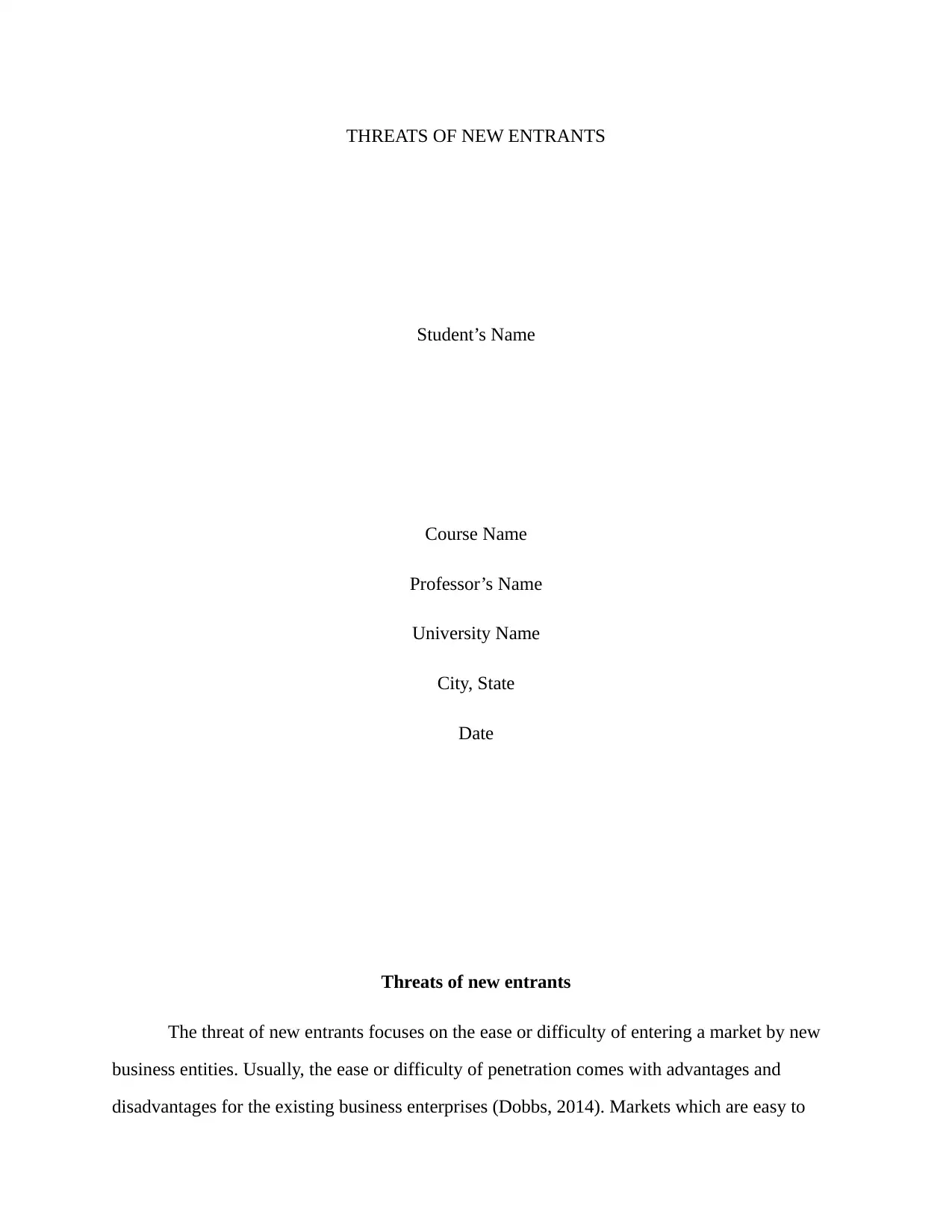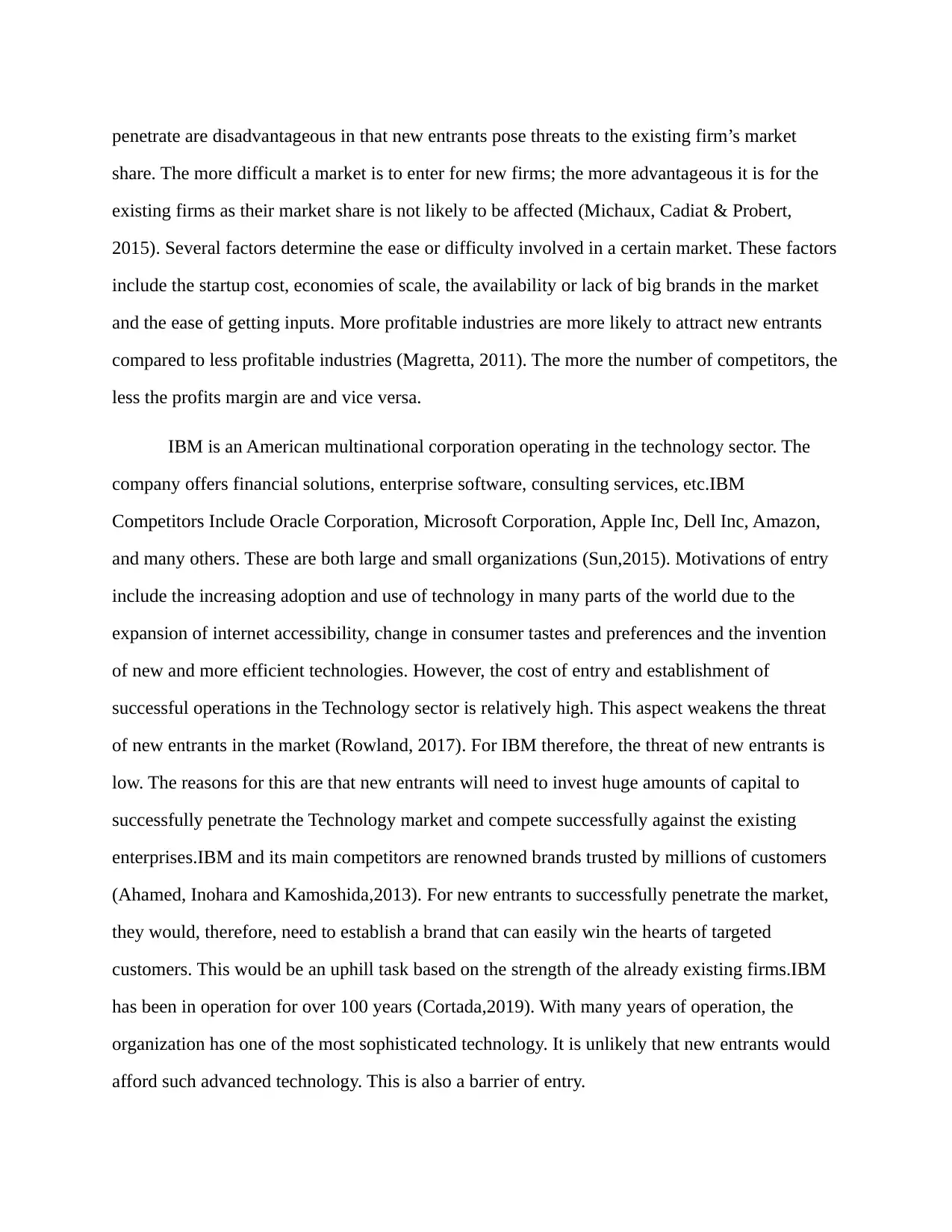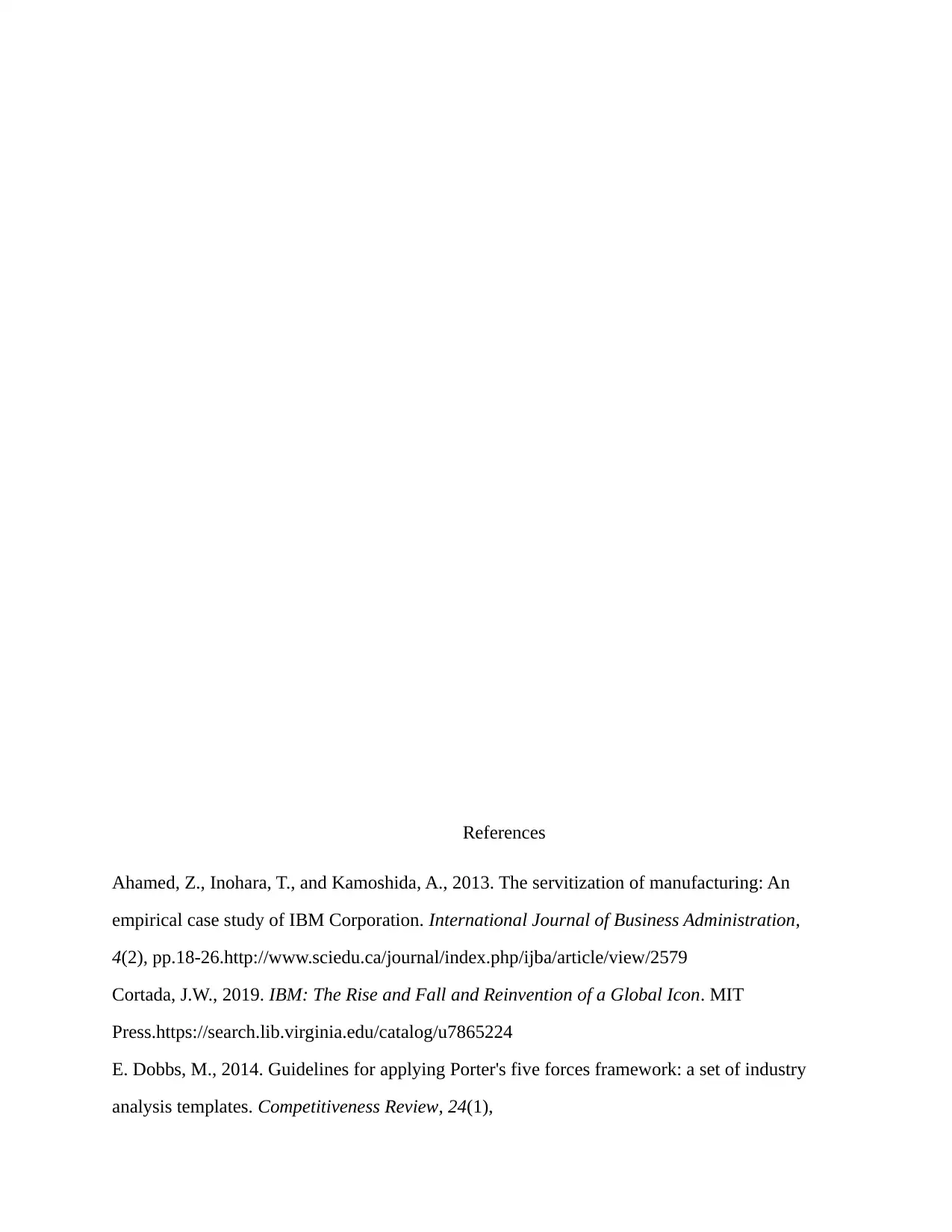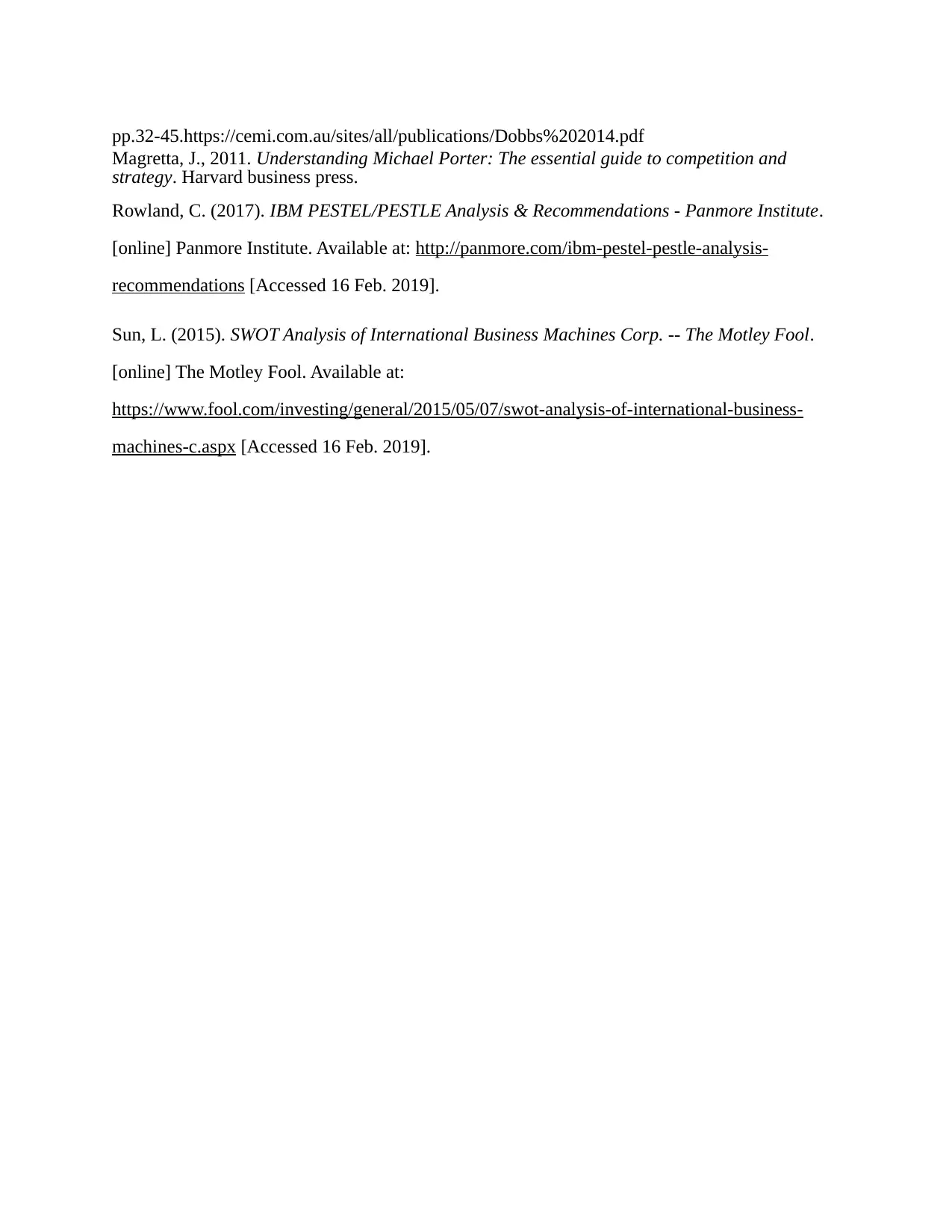Threats of New Entrants
VerifiedAdded on 2023/04/21
|4
|695
|277
AI Summary
This document discusses the threats of new entrants in the market and their impact on existing businesses. It explores the factors that determine the ease or difficulty of entering a market, such as startup costs, economies of scale, and the availability of big brands. The document also provides a case study on IBM and its competitors in the technology sector.
Contribute Materials
Your contribution can guide someone’s learning journey. Share your
documents today.
1 out of 4










![[object Object]](/_next/static/media/star-bottom.7253800d.svg)